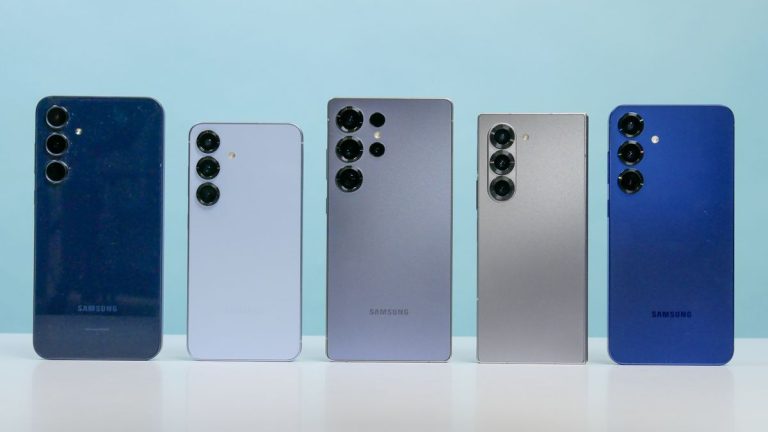Best Upcoming Phones in 2025: What to Expect from Samsung, Apple & Xiaomi
The year 2025 is shaping up to be one of the most exciting in the smartphone industry. Leading brands like Samsung, Apple, and Xiaomi are preparing to launch next-generation devices packed with advanced features and smarter technology. Consumers can expect faster processors, enhanced AI capabilities, and improved cameras that redefine photography standards. Each brand is taking a unique approach—Samsung is refining its design and AI integration, Apple is focusing on ecosystem power and efficiency, while Xiaomi aims to deliver premium performance at a more accessible price.
Samsung: Smarter Design, Faster Chips, and AI Everywhere
Samsung’s next flagship, the Galaxy S26 Ultra, is expected to set new standards for Android performance. Leaks indicate a refined 6.9-inch Dynamic AMOLED 2X display with better outdoor brightness and a reduced bezel design. Powering the device will be the Snapdragon 8 Elite Gen 3 or Samsung’s next-gen Exynos processor, depending on the region. This new chipset will enhance speed, gaming, and real-time AI operations on the device.
Samsung is also improving its S Pen experience. The stylus will feature reduced latency, making drawing and note-taking smoother for artists and business users. The camera setup will include a 200MP primary lens, enhanced zoom capability, and upgraded AI photo correction. Battery capacity may reach 5,500mAh, supported by 65W fast charging—an important step toward reducing charging time.
The Galaxy Z Fold 7 and Z Flip 7 are also part of Samsung’s 2025 lineup. Both foldables will feature lighter designs, better hinge mechanisms, and stronger dust protection. Samsung’s goal is to make foldables more durable and mainstream. The devices will rely heavily on Galaxy AI, offering on-device language translation, document summarization, and smart content generation. In short, Samsung is turning every phone into a productivity hub.
Apple: Ecosystem Power and Smarter Performance
Apple’s upcoming iPhone 17 Pro and iPhone 17 Pro Max will continue the company’s tradition of combining simplicity with power. Apple plans to use its latest A18 Pro Bionic chip, built to handle AI workloads efficiently while improving energy use. This chip will support advanced features like real-time photo retouching, generative video creation, and enhanced Siri assistance.
Design-wise, Apple may introduce an even slimmer titanium body and new matte color options. The display will use LTPO OLED technology for smoother transitions and higher brightness. The camera system will be one of the biggest highlights, featuring a 1-inch sensor, 48MP ultra-wide camera, and improved telephoto lens with 10x optical zoom. Low-light photography will reach new levels thanks to the upgraded Photonic Engine.
The new iOS 19 will also play a major role in Apple’s 2025 lineup. It will introduce context-aware widgets, smarter notifications, and AI tools that integrate across devices. Users will be able to generate content, summarize emails, and personalize their devices faster than ever. For travelers and outdoor users, Apple may expand its satellite connectivity to include text-based internet features. Prices are expected to start at around $1,099, maintaining Apple’s premium positioning but delivering more innovation than before.
Xiaomi: Redefining Innovation and Value
Xiaomi has been steadily closing the gap between value and luxury, and 2025 will mark its boldest step yet. The Xiaomi 16 Ultra is expected to feature a 6.9-inch AMOLED QHD+ display with a 144Hz refresh rate and adaptive brightness control. Its performance will come from the Snapdragon 8 Elite chipset, paired with up to 16GB RAM and 1TB storage. The phone will focus on photography, with a Leica-engineered 200MP variable-aperture main sensor, enabling cinematic photos and smooth 8K recording.
Battery life will also be a major advantage. The Xiaomi 16 Ultra could feature a 7,000mAh battery with 120W wired charging and 80W wireless support. This means full charging in under 25 minutes. Xiaomi’s HyperOS 2.0 will provide deep AI integration, allowing automatic photo editing, voice translation, and multi-device synchronization across smart homes.
Meanwhile, the Mix Flip 2, Xiaomi’s latest foldable, will offer a sleek, lightweight build with improved hinge durability. It will include an external mini-display for quick controls, enhanced camera performance, and flagship processing power. With expected prices between $999 and $1,199, Xiaomi is clearly targeting premium users who want flagship performance without paying Apple or Samsung prices.
Comparing Samsung, Apple, and Xiaomi
In 2025, each brand will approach smartphone innovation from a different angle. Samsung will lead in versatility, offering both traditional slab phones and advanced foldables. Its Galaxy AI features will enhance creativity and daily productivity. Apple will focus on ecosystem strength and user experience. Its A18 chip and software synergy will make the iPhone 17 Pro the most efficient and intelligent iPhone yet. Xiaomi, on the other hand, will emphasize affordability and photography power, bringing high-end features to a broader audience.
For display technology, Samsung’s AMOLED panels remain the benchmark for color accuracy and brightness. Apple’s OLED screens deliver unmatched clarity and touch responsiveness, while Xiaomi’s high-refresh AMOLED offers excellent gaming performance. Battery life will see Xiaomi leading in capacity and charging speed, Samsung balancing endurance and efficiency, and Apple optimizing longevity through software. When it comes to AI, all three will integrate machine learning into daily tasks—Samsung for productivity, Apple for personalization, and Xiaomi for creative use.
What Buyers Can Expect in 2025
Smartphone buyers in 2025 should expect better performance, smarter software, and longer battery life as standard features. AI will become more prominent, offering live translations, content creation tools, and smarter assistants. Foldable phones will continue to improve, becoming thinner, lighter, and more durable. The global market will see strong competition, which should also bring better options at different price points.
For professionals, Samsung’s Galaxy S26 Ultra and Fold 7 will be ideal for productivity and multitasking. Apple’s iPhone 17 Pro Max will appeal to creators, entrepreneurs, and those who want the best long-term software support. Xiaomi’s 16 Ultra will suit users seeking flagship power at a more affordable price. The 2025 smartphone race will not just be about power—it will be about intelligence, sustainability, and how each brand makes technology more human.
Looking Ahead: The Future Beyond 2025
The smartphone future goes beyond faster chips and better cameras. Samsung is expected to expand its Eco Galaxy initiative by using recyclable materials. Apple continues to invest in carbon-neutral manufacturing, while Xiaomi is exploring repair-friendly modular designs. As on-device AI becomes mainstream, phones will anticipate user needs, reducing screen time while increasing productivity. By 2026, we may see full integration of voice-based AI agents capable of running offline, faster wireless charging across all devices, and deeper links between phones, wearables, and vehicles.



















